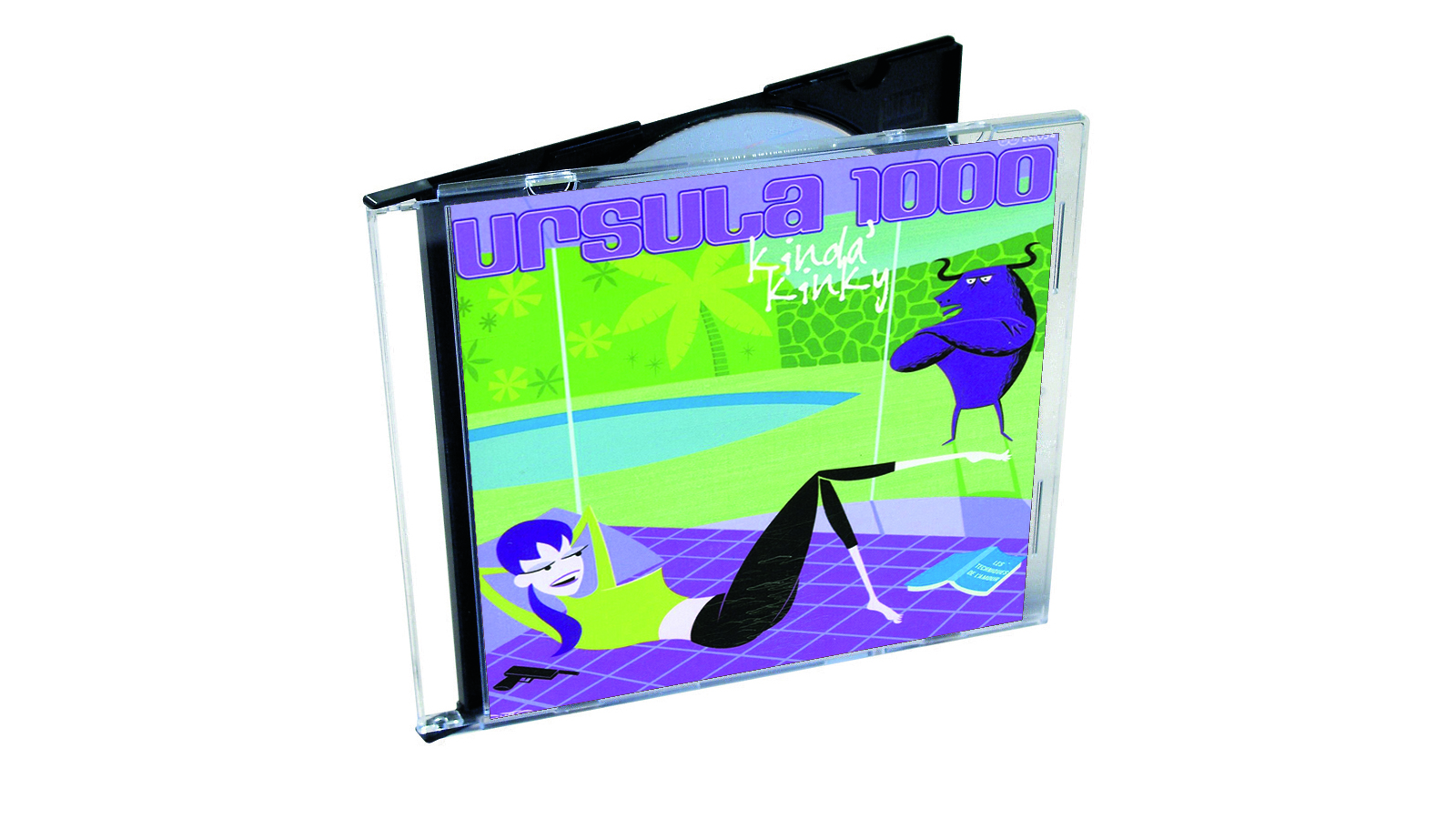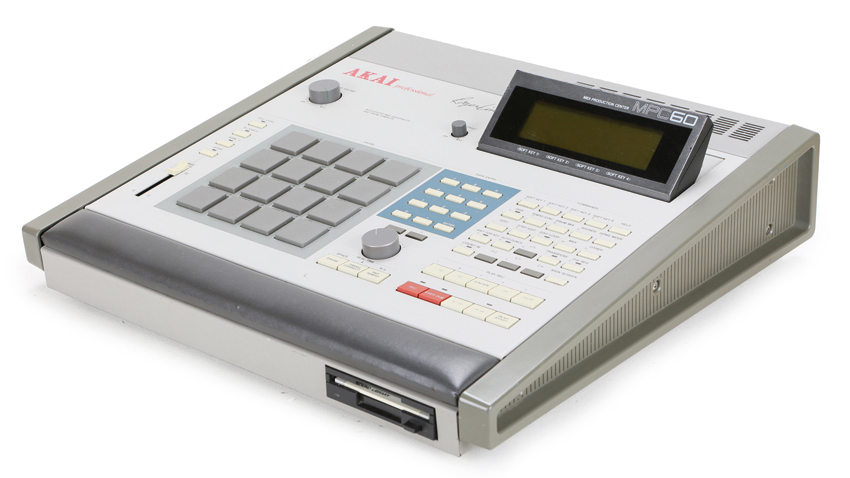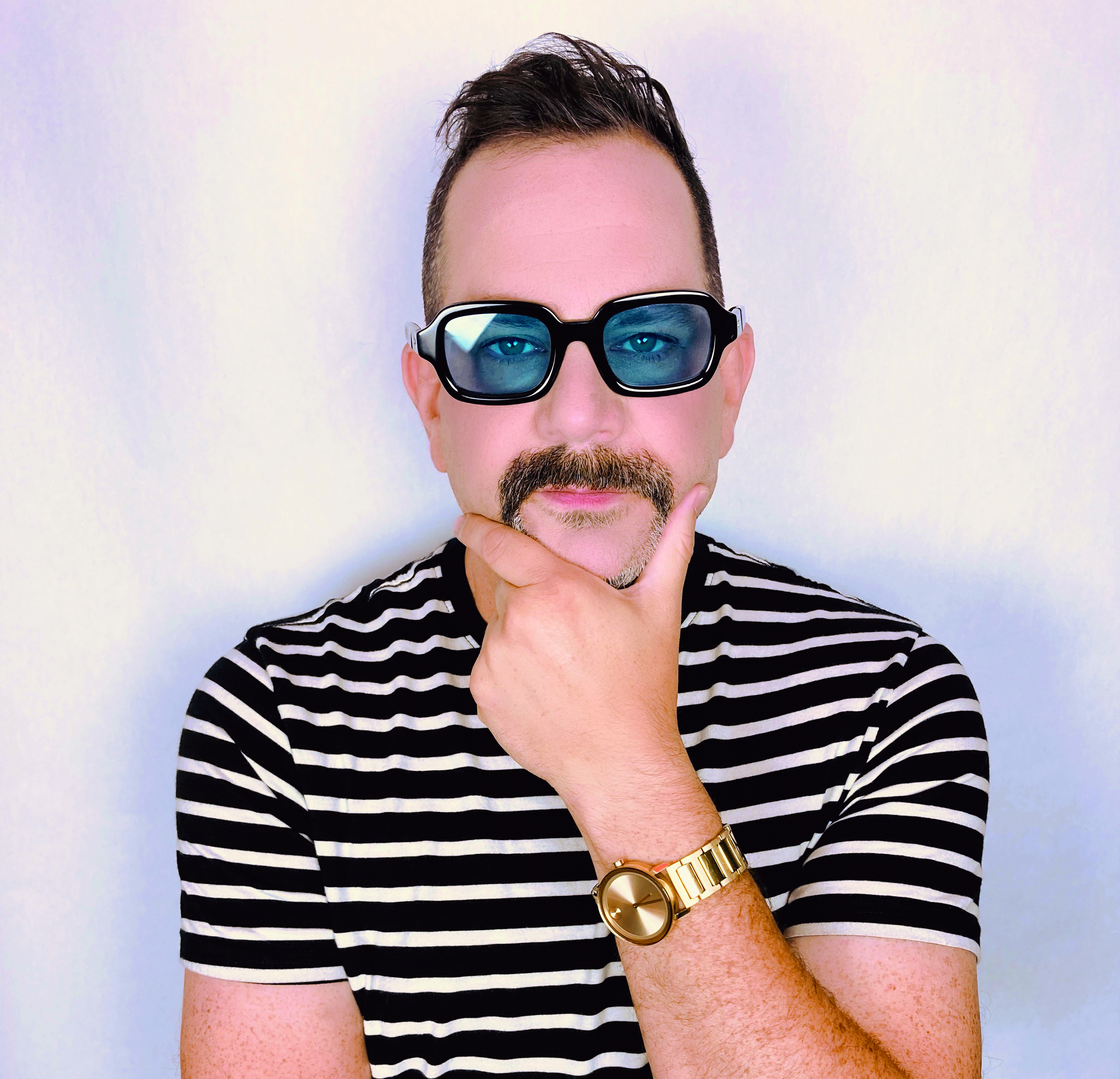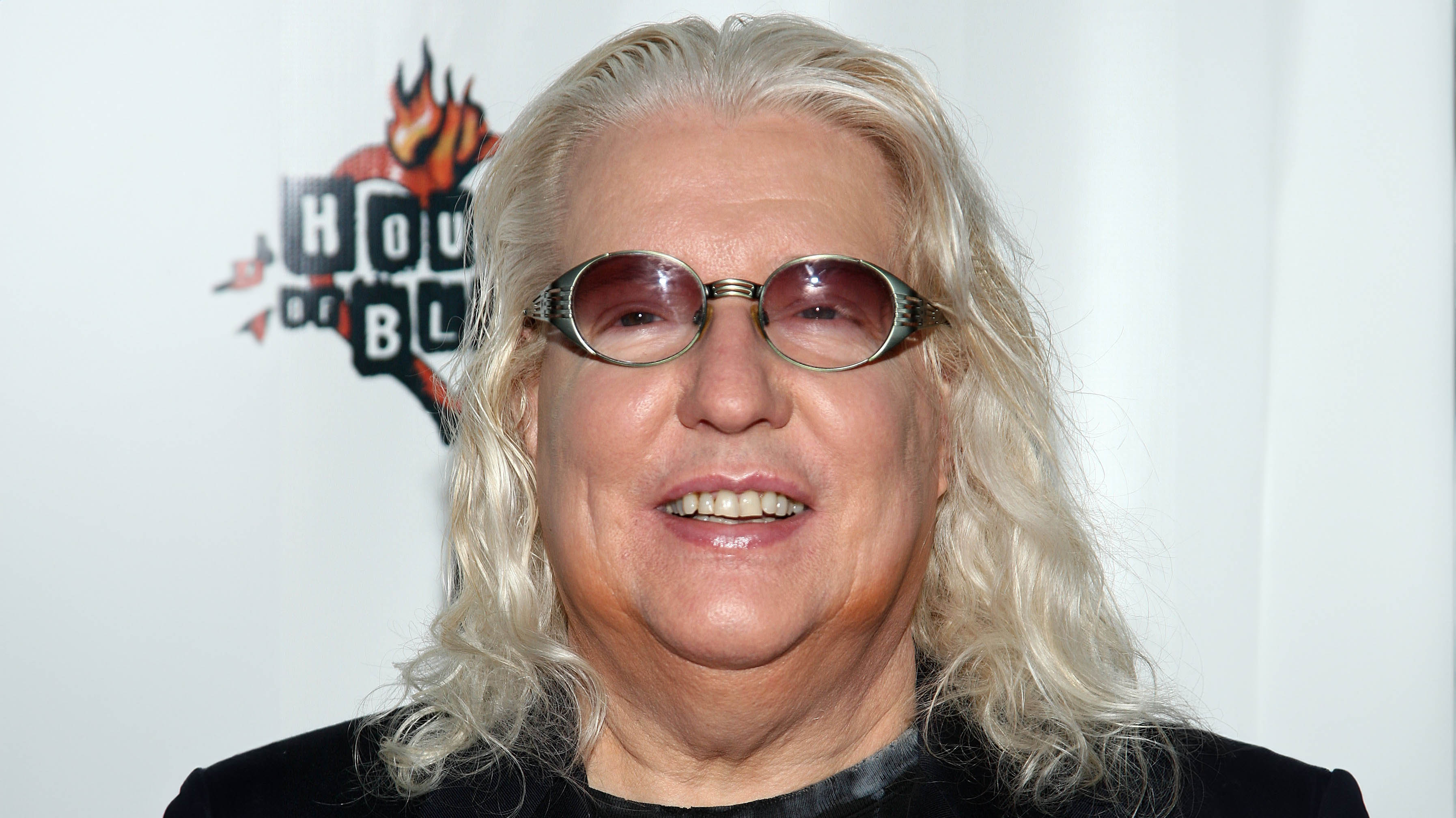Classic album: Ursula 1000 on Kinda' Kinky
NY producer Ursula 1000 digs deep into the production that went into his sampledelic classic Kinda' Kinky

Exploding out of the sampledelic lounge-revival scene of the late ’90s, New York producer Ursula 1000 made quite the name for himself with his modern updating of those rose-tinted, retro-tastic grooves. He set his stall out early with his debut album, The Now Sound Of Ursula 1000, full of swish toe-tapping numbers. But, it was the follow-up LP where he really hit his stride.
“The first album was so crude,” he says. “It was very loopy. And just using an MPC2000, with overdubs on a MiniDisc mixer, and no plugins. I wanted a far more fluid sound for Kinda’ Kinky, and that came when I moved to Pro Tools.” Learning the ropes from Luke Gottwald, aka the now world famous Dr. Luke, he realised the potential the software offered.
“I got into a whole new world of almost forensic micro-chopping,” he says. “And then that helped my confidence grow elsewhere. I was already a good drummer, but didn’t have much faith in my keyboard and guitar skills. “But, once I’d opened up in Pro Tools, I was starting to have much more fun bringing in my live playing to the mix.”
The wheels were firmly in motion, and work set off at a cracking rate, checking off tracks that would make the new album. Synths and electro drums were adding to the fusion. And heavy nods to the club-rocking sounds of labels like Wall of Sound and Finger Lickin’, were firmly made. “I loved all that UK breaks stuff,” he says. “I really wanted to put my own spin on it.”
I learnt it off Dr. Luke, who went on to work with Max Martin, and does stuff for Kelly Clarkson and Britney Spears!
Which he then went ahead and did, by taking all of the most swinging slices of the dusty Latin, mod, garage rock, and flower power pop records in his vinyl collection, and adding them into this big beat blender. “My production went up leaps and bounds from that loopy stuff,” he says. “It was a very exciting time to be making music.” And it resulted in the most intoxicating blend of hip-shaking beats this side of Hugh Hefner’s 8-track stereo. Yeah, baby!

“For the second album I still had the MPC 2000, for jamming on stuff. I was a drummer, and it was still fun to play. But, it was definitely all about Pro Tools. I learnt it off Dr. Luke, who went on to work with Max Martin, and does stuff for Kelly Clarkson and Britney Spears!
“I also had a Korg Polysix, and a Roland Groovebox, which was like this really corny little thing for more of your ‘acidy’ stuff. Then I used some random Casio bits that I had laying around – little beat boxes, and stuff like that.
Get the MusicRadar Newsletter
Want all the hottest music and gear news, reviews, deals, features and more, direct to your inbox? Sign up here.
“I’ve always had my Fender Mustang Bass, and an Ibanez Iceman electric guitar, which were used. Then things like the early Nord Electro – the very first one for organs and stuff, which was great.
“And then one little secret weapon that I used for that album was the Danelectro Electric Sitar, which is so much fun to play, and that kind of helped to add that little bit of psychedelic soul, where needed.”
Kinda' Kinky
“The funny story with the vocals for this was that we originally wanted this famous ’60s Twiggy-level model by the name of Veruschka to do it. But, that fell through and my friend’s girlfriend said she knew an actress who could nail it. That was Rebecca Mader, who ended up being a really famous actress in Lost and The Devil Wears Prada.
“The lyrics were inspired by a scene in this madcap ’60s comedy Lord Love A Duck where Tuesday Weld’s character is trying on all these sweaters and going through all these wacky sounding colours. I took that and started adding my own. That’s how the lyrics all became these wacky colour things.”
Boogaloop
“This is a funky boogaloo, Latin-flavoured kind of thing. That’s what the name was saying. At the time I was getting really into that kind of stuff. People like Pérez Prado and Joe Bataan – I was really into mixing that kind of vibe with things.
“I’ve always loved Latin rhythms, so that was kind of like an experiment, mixing funk breaks, rhythms, etc, with modern elements and then all the big beat music and and all this Japanese stuff I was listening to. Then there’s that bassline going through it, which would have been the Korg Polysix.”
Beatbox Cha Cha
“This is similar to tracks like Boogaloop, exploring that Latin vibe. Mixing it up with some acidy stuff. It was all about adding modern electronics to these older, groovy sounds. Funnily enough, that was like the one sample I did have to clear. I’d collected all these crazy records and had kids’ albums and Sesame Street records. I had this one where Bert from Bert and Ernie is playing these crazy bongos and percussion and then The Count actually says, ‘Cha cha cha’. I was like, ‘Oh my god!’ And I ended up putting it all in the demo.
“Then I’m DJing a party and a guy introduces himself and says he likes my music. I ask what he does and it turns out he’s the legal advisor for Sesame Street! I tell him I’ve literally just sampled them and could he help clear it, which he went on to do.”

Jackie Go!
“There were these famous parties in New York in the ’90s called Jackie 60, probably named after Jackie Onassis. I always looked at that and thought it said ‘Jackie Go’.
“That’s one of the ones on the album that began life as a title first, and then worked to make a track around it.
“Whereas the other tracks are more on a Latin vibe, this is much more of a Mod groover. And there’s a whistle sound in there, which I think is me. It’s me trying to get that Cypress Hill Insane In The Brain whistle sound.”
Smokebomb
“By the time I got to this track I think I’d started getting this idea of the album. Then I’m like, ‘OK, I want to start telling a little story here, and soundtrack a little mini movie’. And so I thought at this point we need like some spy chase, like, cinematic suspense kind of thing.
“And I think previously it had all been bass guitars, or synth basses, so I wanted to do something on this track with an upright bass. So I found all these cool little licks that are cut up, to get that very car chase/spy chase kind of groove. Like a detective movie, or something.”
The Hindu That You Do
“I was on the radar of Rough Trade, after my first album, and they got in touch as they were putting out a little 7” single series of records. I gave them this, which came out a while before the album, if I’m not mistaken.
“Years later I got a Japanese Barbie-style doll in the mail. She was called something like a ‘Rough Trade Indie Rocker’ doll, or something. But she had this little record bag and a mini version of this 45 packaged with her. Which was so cool!
“Musically it’s very Middle Eastern. I’ve always loved sitars and things like that. So, now in the album, we’ve gone to India. It’s all like, ‘Where am I gonna stamp your musical passport for next?'”
Les Techniques De L'Amour
“Here we’re in France. I’ve always loved that international feel. And I wanted to bring in some electro on this track.
“All the previous tracks have been on that more beaty, funk break tip, and this is much more on that ’80s electro, drum machine vibe. It would’ve been programmed on something like a groovebox as it had all the 808 and 909 sounds on it.
“I’m always listening to a million things, and this was inspired by The Soulsonic Force and German stuff like Anthony Rother, so this is where that stuff came into play.”
Continental Break Fest
“That’s the other one that was the title first. I got the idea for the title from the producers Skeewiff who had a track called Let’s Have Scratch For Breakfast. It must have stuck in my head and I came up with ‘break fest’, and I thought, ‘Somebody must have already thought of that’. But no, and then the idea came from that.
“It was also very much part of the UK big beat sound of the time, as well. We loved all that stuff. The States had their own version of breaks, but it was more DJ Icey and electro breaks. We were definitely more interested in what was happening in Britain. Our idea was to be like the US take on that style.”
Mucho Tequila
“That was probably another one where I was still getting the Latin and boogaloo grooves out of my system.
“My dad is on this, too. He was a horn player so recorded all these cool horn blasts for me. I didn’t know what I wanted, to start. He was from a classical background, so he’s not really a jazz player who improvises. So I asked him to give me scales and stuff I could fool around with, which I used throughout this track.”
Tigerbeat
“I wanted this one to have a lot of that garage rock sound, and also French Yé-yé ’60s kind of thing to it. So I think that’s where that was kind of coming into play. I’m trying to think what I was listening to at the time, but I mean all this stuff was hitting the spot. Compilations like Back From The Grave, with that snarly garage punk.
“I started this with a guitar sample and built it from there. It might’ve started on the MPC and then brought into Pro Tools, too.”
Riviera Rendezvous
“One thing that definitely has been happening throughout the entire record up to this point is, there’s a lot of humour in it. It’s very cheeky. I still love that.
“At this point I wanted something a bit more sophisticated, even if that sounds pretentious. But that exotic, Audrey Hepburn feel, travelling the Riveria kind of vibe. So I made this sophisticated, downtempo thing.
“Also, I’d been fooling around with a French instructional record that I’d had even way before the first album. That kind of stuff had been laying around so I peppered it in.”
Samba 1000
“The title is a nod to the track Mambo 1000 off the first LP. I had this weird idea to do a load of tracks called ‘something 1000’.
“This is the second track I did with Dr. Luke, as well. I was listening to Knee Deep, who’d done a really nice remix of a samba/Latin house track that I always used to play out [Afro Medusa – Pasilda]. Huge track.
At the time, the big beat thing was happening, I was still playing a lot of Latin house. I would switch up my sets with it, so I wanted something more like that.”
The Girl From N.O.W.H.E.R.E
“This could have started with the title first. Super nod to The Man from U.N.C.L.E. Again, after Riviera Rendezvous, I wanted something else super classy and cinematic. What else would’ve been like this at the time? Maybe The Mighty Bop stuff. That was Bob Sinclar, who is more known as a house guy. But, for me, he was making some of the best trip-hop that was happening in the ’90s. That French take on trip-hop was so different to what, say, DJ Shadow was doing.”
Nightcap
“This was the cheeky ending. Like, roll the credits. It may well have been the last track on the album that I made. I definitely wanted to have it like an end nightcap because, you know, ‘Kinda’ Kinky’ starts off like you’re plugging in your little cassette kind of thing, to begin. So I just thought this would be a nice way to close the record.”


Future Music is the number one magazine for today's producers. Packed with technique and technology we'll help you make great new music. All-access artist interviews, in-depth gear reviews, essential production tutorials and much more. Every marvellous monthly edition features reliable reviews of the latest and greatest hardware and software technology and techniques, unparalleled advice, in-depth interviews, sensational free samples and so much more to improve the experience and outcome of your music-making.
"At first the tension was unbelievable. Johnny was really cold, Dee Dee was OK but Joey was a sweetheart": The story of the Ramones' recording of Baby I Love You
"Reggae is more freeform than the blues. But more important, reggae is for everyone": Bob Marley and the Wailers' Catch a Fire, track-by-track










